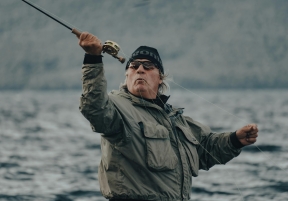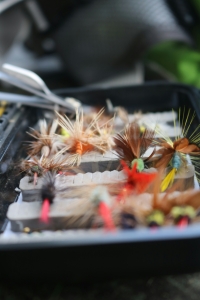
Choosing the Perfect Flies for Your Fly Fishing Adventures
One of the most exhilarating aspects of fly fishing is the art of selecting the perfect fly to entice those elusive trout. With countless fly patterns available, each designed to mimic a specific insect or baitfish, the task of choosing the right fly can seem daunting. Fear not, for I’m here to guide you through the process of selecting the best flies for your next fishing expedition. Let’s dive in:
1. Know Your Local Waters:
Understanding the aquatic insect life in the waters you’ll be fishing is paramount to fly selection success. Research local hatch charts to determine which insects are prevalent during different seasons. Common insects include mayflies, caddisflies, stoneflies, and midges. Matching your fly patterns to the insects the fish are feeding on will greatly increase your chances of success.
2. Match the Hatch:
Once you’ve identified the prevalent insects, it’s time to match the hatch. Choose fly patterns that closely resemble the size, shape, and color of the natural insects. Pay attention to details such as wing profile, body coloration, and leg movement to create a convincing imitation. Remember, trout can be discerning creatures, so the closer your fly resembles the real thing, the better your chances of fooling them.
3. Experiment with Different Patterns:

While matching the hatch is crucial, don’t be afraid to experiment with different fly patterns. Trout can be unpredictable, and what works one day may not work the next. Carry a variety of fly patterns in your box, including nymphs, dry flies, emergers, and streamers. Be prepared to switch flies frequently until you find what the fish are responding to.
4. Consider Water Conditions:
Pay close attention to water conditions when selecting your flies. Factors such as water clarity, flow rate, and temperature can influence fish behavior and feeding patterns. In murky or fast-flowing water, brightly colored or heavily weighted flies may be more visible and attractive to fish. In clear, slow-moving water, opt for more natural, subtle patterns to avoid spooking wary trout.
5. Adapt to Seasonal Changes:
As the seasons change, so do the feeding habits of trout and the insects they prey upon. In spring and early summer, when insect activity is at its peak, focus on imitating mayflies, caddisflies, and stoneflies. As temperatures rise in summer, terrestrial insects such as grasshoppers, ants, and beetles become abundant and make excellent fly choices. In fall, when aquatic insect activity declines, switch to larger streamer patterns to mimic baitfish and attract aggressive strikes from hungry trout.
6. Trust Your Instincts:
While there’s certainly a science to fly selection, there’s also an element of intuition involved. Trust your instincts and pay attention to subtle cues from the fish and the environment. If you have a gut feeling about a particular fly pattern, give it a try—you never know what might happen!
Remember, fly fishing is as much about the journey as it is about the destination. Enjoy the process of selecting flies, experimenting with different patterns, and learning from each fishing experience. With practice and patience, you’ll develop the intuition and expertise needed to consistently choose the best flies for any fishing situation. Tight lines and happy fishing!